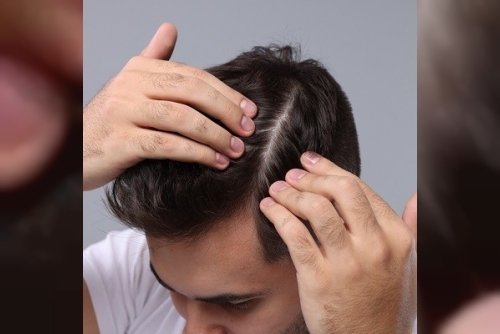Hair loss can be a distressing experience for many individuals, and it often leads them to explore various solutions. Among the most effective and permanent options is a hair transplant. If you are considering a hair transplant in Islamabad, it’s essential to understand the process, from initial consultation to post-surgery care. This blog will walk you through each step of the process of getting a hair transplant in Islamabad, ensuring you are well-prepared for your journey to regrow a full head of hair.
1. Initial ConsultationThe first step in getting a hair transplant is scheduling a consultation with a certified hair transplant surgeon or a clinic in Islamabad. During the consultation, the surgeon will evaluate your hair loss, discuss your medical history, and assess your suitability for the procedure. This is also the time for you to ask questions and express any concerns you may have.
Your surgeon will typically perform a physical examination of your scalp to determine the extent of hair loss and assess the quality and quantity of donor hair. The donor hair is usually taken from areas like the back or sides of your head, where hair is resistant to the hormone responsible for hair loss (DHT).
During this consultation, you will also discuss your expectations, the method of hair transplant that will be used, and the cost of the procedure. It’s important to have realistic expectations about the results and understand that hair transplants require time to fully take effect.
2. Choosing the Right Hair Transplant MethodIn Islamabad, there are several advanced methods of hair transplantation, each with its own set of benefits. The two most popular methods are:
FUE (Follicular Unit Extraction): FUE is a minimally invasive procedure where individual hair follicles are extracted from the donor area and transplanted into the thinning or bald areas of the scalp. This method is known for leaving minimal scarring and faster recovery times. It’s an ideal choice for individuals who want to avoid visible scars and prefer a quicker recovery.
FUT (Follicular Unit Transplantation): FUT involves removing a strip of scalp from the donor area, from which hair follicles are extracted and transplanted to the thinning areas. This method may leave a linear scar but is often recommended for individuals with more extensive hair loss or those requiring a larger number of grafts.
Your surgeon will recommend the best method based on your specific hair loss condition, the amount of donor hair available, and your personal preferences.
3. Pre-Surgery PreparationOnce you’ve chosen your hair transplant method, the next step is preparing for the surgery. Prior to your surgery, your surgeon will provide you with specific instructions to ensure everything goes smoothly. These instructions may include:
Avoiding blood-thinning medications such as aspirin or ibuprofen for a few weeks before surgery. Refraining from alcohol and smoking, as both can interfere with the healing process. Shaving the donor area if necessary, especially for FUE. Washing your hair thoroughly to ensure the scalp is clean before surgery.It's important to follow these guidelines to minimize the risk of complications during and after the procedure.
4. The Hair Transplant ProcedureOn the day of your surgery, you will arrive at the clinic, where you’ll be greeted by the surgical team. The procedure typically takes anywhere from 4 to 8 hours, depending on the number of grafts being transplanted and the method used.
Anesthesia: Before starting, local anesthesia is administered to the donor and recipient areas of the scalp to ensure you remain comfortable throughout the procedure. The anesthesia ensures that you won’t feel any pain during the extraction and transplantation of hair follicles.
Extraction: For FUE, the surgeon will use a small punch tool to extract individual hair follicles from the donor area. In FUT, the surgeon will remove a strip of scalp and dissect it into smaller follicular units.
Graft Preparation: The extracted hair follicles are then prepared and sorted by the surgical team under a microscope. The follicles are carefully preserved to prevent damage and ensure they remain viable.
Implantation: Once the grafts are prepared, the surgeon creates small incisions in the recipient area and places each hair follicle into the incision with precision. The direction and angle of each follicle are carefully considered to ensure the final result looks natural.
5. Post-Surgery CareAfter the procedure, you will be given instructions on how to care for your scalp to promote healing and ensure the success of the transplant. Here are some key post-surgery tips:
Pain Management: Mild pain or discomfort is common after the procedure, but this can be managed with pain relievers prescribed by your surgeon. Avoid Scratching or Picking: It’s essential not to scratch or pick at the transplanted area to avoid damaging the grafts. Avoid Sun Exposure: Direct sun exposure should be avoided for a few weeks after the surgery to protect the delicate follicles. Washing Your Hair: You’ll need to be gentle when washing your hair for the first few weeks. Your surgeon will advise you on the right shampoo and technique to avoid dislodging the transplanted grafts. Sleep Position: Sleeping with your head elevated can help reduce swelling during the initial recovery period. 6. Results and Recovery TimelineThe recovery process for a hair transplant in Islamabad is relatively quick compared to other surgeries. After the first few days, most patients experience minimal discomfort and can return to work in about a week. However, full recovery and visible results take time.
Week 1-2: You may experience some swelling, redness, and scabbing in the donor and recipient areas. This is completely normal and should subside. Month 2-3: Hair shedding is common during the first couple of months as the transplanted hair follicles enter the resting phase. Don’t be alarmed—this is a part of the process. Month 4-6: New hair growth begins to emerge, and you will notice thicker and fuller hair gradually. Month 12-18: Full results are typically visible at this stage, with hair growing naturally in the treated areas. 7. Final ThoughtsGetting a hair transplant in Islamabad is a life-changing decision, and understanding the process is crucial to achieving the best results. With the right clinic and a skilled surgeon, you can regain a fuller, more natural-looking head of hair and boost your confidence. Be sure to do thorough research, consult with experts, and follow all pre- and post-operative care instructions to ensure a successful hair restoration journey.Remember, hair transplants are not a quick fix—they require patience, dedication, and proper care, but the end results are well worth it.












